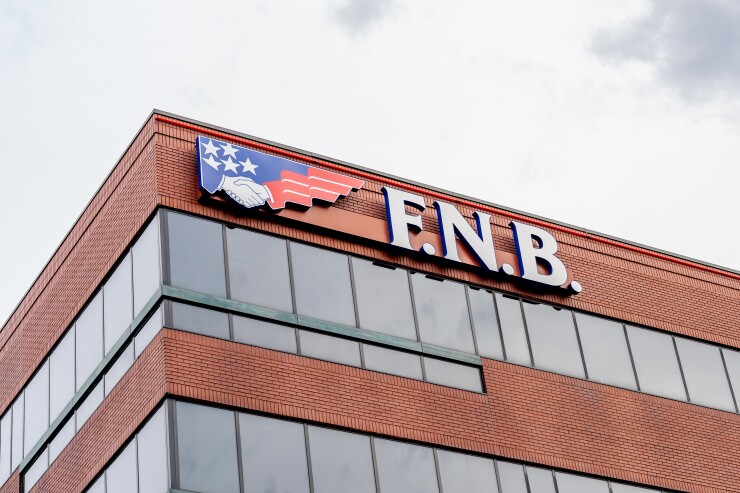
Even small and midsize banks that have reported solid loan growth in the first quarter are bracing for a slowdown. During quarterly earnings calls, executives cited high interest rates that are curbing borrower demand and fallout from the recent banking crisis that could galvanize the industry to tighten lending standards.
"We could simply be in for a long haul of pretty weak trends as customers weigh uncertainty and banks themselves pull back on their appetite to lend," said Scott Siefers, an analyst at Piper Sandler.
Following a series of Federal Reserve interest rate hikes over the past year to tamp down inflation,
"Higher borrowing costs have forced borrowers to reconsider the economics of new projects, business expansion, equipment purchases and premium finance costs," Richard Murphy, chief lending officer of Wintrust Financial, said on the company's earnings call this week. Overall business sentiment, he added, "dropped during the past few months."
The $52.9 billion-asset Wintrust in Rosemont, Illinois, said its first-quarter loans increased 4% from the prior quarter, though this was below its expectations at the start of the quarter. Murphy expects continued growth, but he said it would largely come by winning business from bruised competitors as opposed to meeting new loan demand.
"My suspicion is we just continue to see opportunities coming out of large banks," he said.
Higher rates also boosted the costs of deposit for banks, making it more expensive to fund loans and explaining why some of Wintrust's competitors are retreating.
Then, in March, the failures of Silicon Valley Bank and Signature Bank, hastened by runs on deposits,
A former employee at the Consumer Financial Protection Bureau sent data on 256,000 consumers and dozens of companies to their personal email account.
Deposits and liquidity "are suddenly the big concern," said Goldman Sach analyst Ryan Nash. He said the failures also raised fresh worries about
Bankers agreed.
"I think if you step back and look at the macro environment, there's certainly recession fears out there," said James Eccher, chairman and CEO of Old Second Bancorp.
"Our borrowers are being very cautious," he added on the $5.9 billion-asset bank's call with analysts this week to discuss earnings.
Old Second in Aurora, Illinois, grew its first-quarter loans 3.5% from the prior quarter. Eccher said that "given the environment," that pace of growth "is not sustainable." He anticipates the bank's loan portfolio will expand this year, but the rate of growth could get cut in half.
The $44 billion-asset F.N.B Corp. in Pittsburgh said its first-quarter loans increased slightly more than 1% from the previous quarter. It also is anticipating further growth, though this could largely come as competitors slow lending and leave prized customers searching for new banks, Chairman and CEO Vincent Delie Jr. said this week during an earnings call.
"I certainly think the industry is going to change," Delie said. "I think the landscape is going to change because of what's going on. There will be pressure on others as we move through this cycle."
Preferred Bank in Los Angeles said its first-quarter loans were essentially flat from the previous quarter. Li Yu, chairman and CEO of the $6.5 billion-asset bank, said the current dubious conditions make it unwise to even wager a guess on future growth.
"I cannot give you any guidance on that because I truly do not know," he said.
Yu said that, for now, he is focused on
"Right now, everybody is competing for these deposits fearlessly," Yu said. "If you ask me in May, I will tell you our vision better. Right now, I have no clarity" on loan growth.






